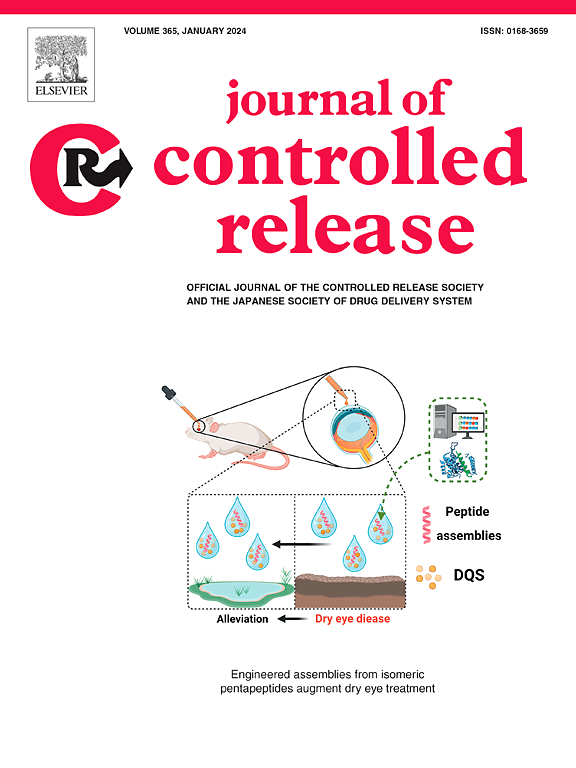Metabolic reprogramming of macrophages by a nano-sized opsonization strategy to restore M1/M2 balance for osteoarthritis therapy
IF 10.5
1区 医学
Q1 CHEMISTRY, MULTIDISCIPLINARY
引用次数: 0
Abstract
Osteoarthritis is a chronic and progressive joint disease accompanied by cartilage degeneration and synovial inflammation. It is associated with an imbalance of synovial macrophage M1/M2 ratio tilting more towards the pro-inflammatory M1 than the anti-inflammatory M2. The M1-macrophages rely on aerobic glycolysis for energy whereas the M2-macrophages derive energy from oxidative phosphorylation. Therefore, inhibiting aerobic glycolysis to induce metabolic reprogramming of macrophages and consequently promote the shift from M1 type to M2 type is a therapeutic strategy for osteoarthritis. Here we developed a macrophage-targeting strategy based on opsonization, using nanoparticles self-assembled to incorporate Chrysin (an anti-inflammatory flavonoid) and V-9302 (an inhibitor of glutamine uptake), and the outer layer modified by immunoglobulin IgG by electrostatic adsorption into IgG/Fe-CV NPs. In vitro studies showed that IgG/Fe-CV NPs effectively target M1 macrophages and inhibit HIF-1α and GLUT-1 essential for aerobic glycolysis and promote polarization from M1 to M2-type macrophages. In vivo, IgG/Fe-CV NPs inhibit inflammation and protect against cartilage damage. The metabolic reprogramming strategy with IgG/Fe-CV NPs to shift macrophage polarization from inflammatory to anti-inflammatory phenotype by inhibiting aerobic glycolysis and glutamine delivery may open up new avenues to treat osteoarthritis.

求助全文
约1分钟内获得全文
求助全文
来源期刊

Journal of Controlled Release
医学-化学综合
CiteScore
18.50
自引率
5.60%
发文量
700
审稿时长
39 days
期刊介绍:
The Journal of Controlled Release (JCR) proudly serves as the Official Journal of the Controlled Release Society and the Japan Society of Drug Delivery System.
Dedicated to the broad field of delivery science and technology, JCR publishes high-quality research articles covering drug delivery systems and all facets of formulations. This includes the physicochemical and biological properties of drugs, design and characterization of dosage forms, release mechanisms, in vivo testing, and formulation research and development across pharmaceutical, diagnostic, agricultural, environmental, cosmetic, and food industries.
Priority is given to manuscripts that contribute to the fundamental understanding of principles or demonstrate the advantages of novel technologies in terms of safety and efficacy over current clinical standards. JCR strives to be a leading platform for advancements in delivery science and technology.
 求助内容:
求助内容: 应助结果提醒方式:
应助结果提醒方式:


